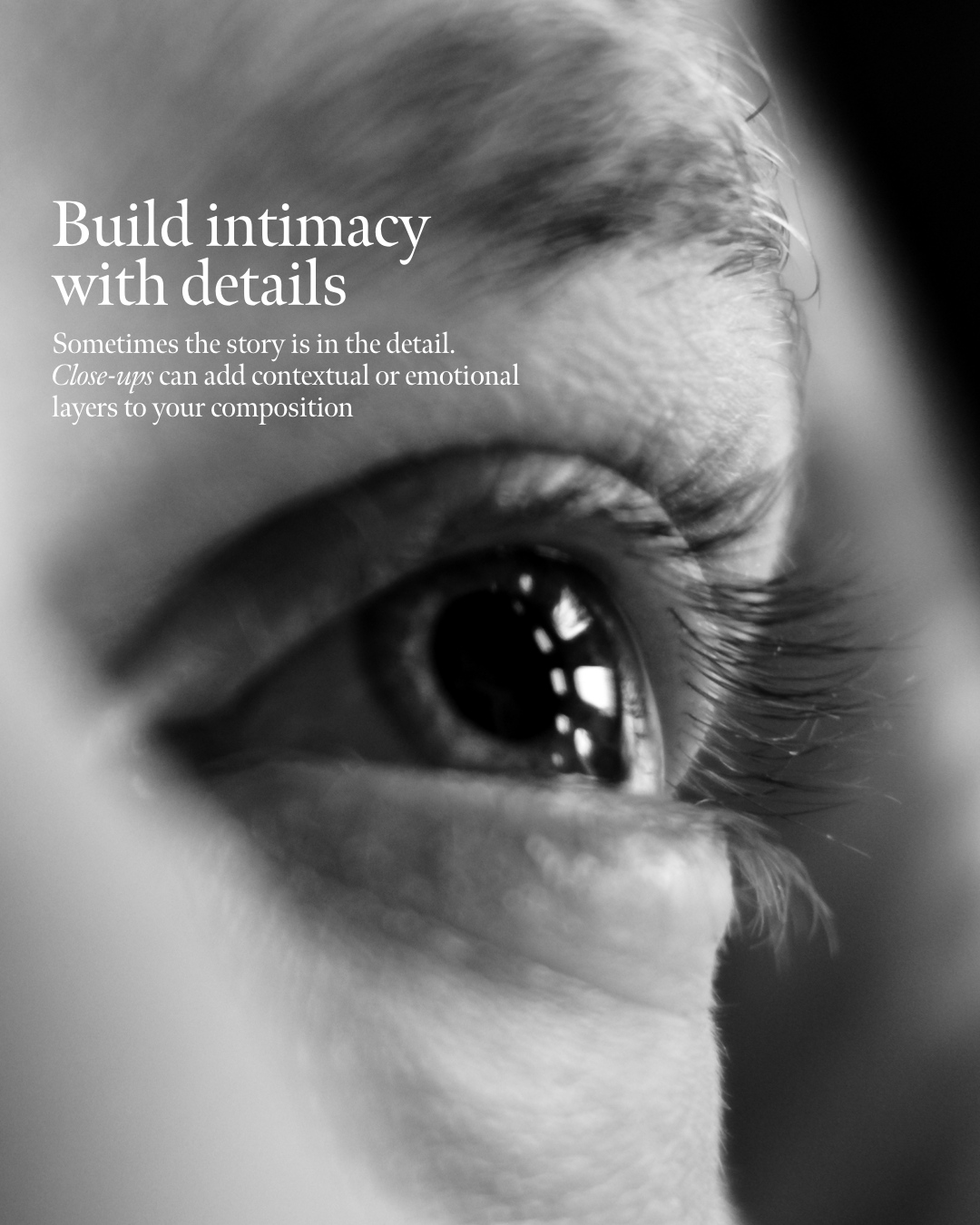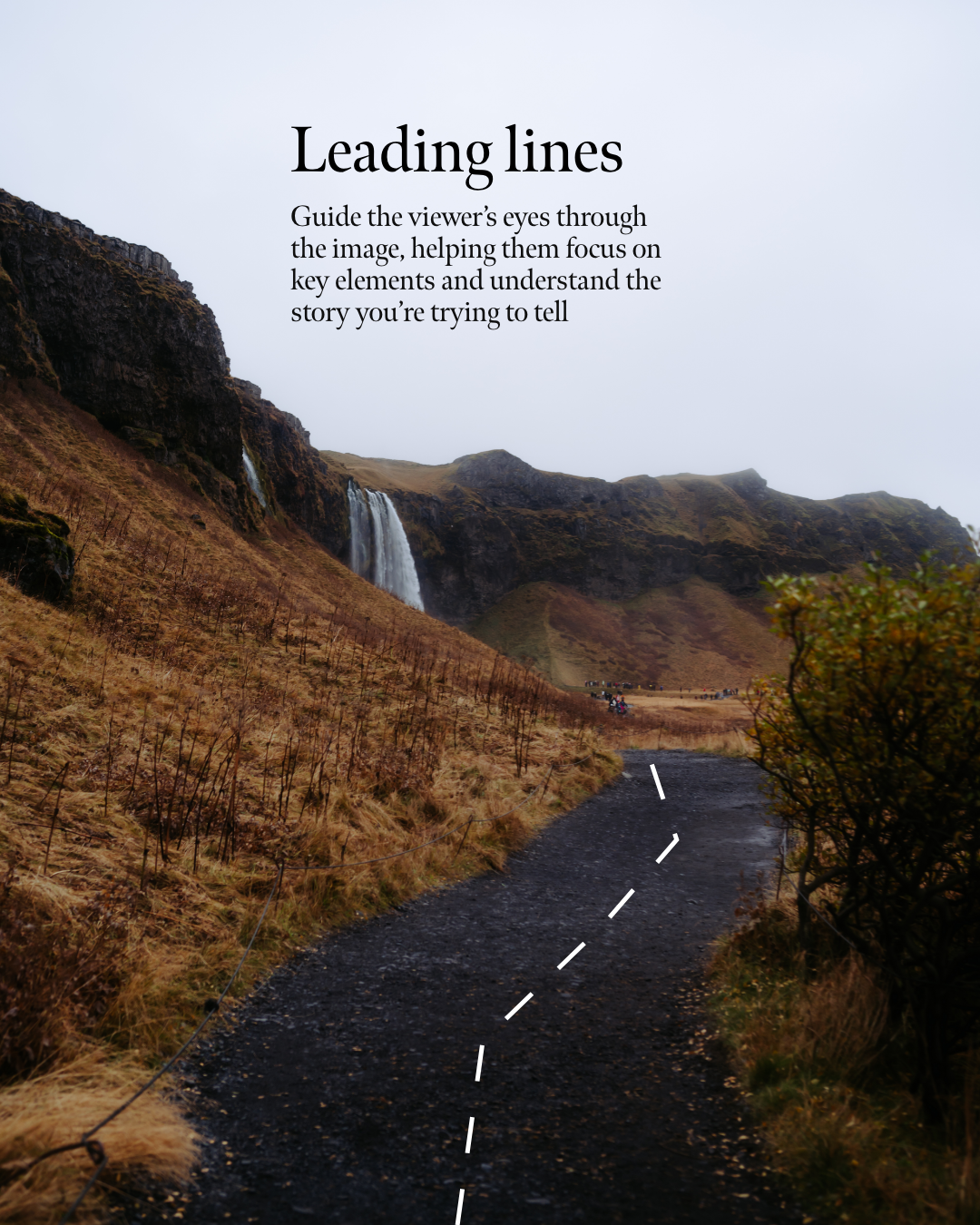How to Create Stories With Composition
Photography is a distinctly human endeavour. Some photos have this incredible ability to capture the soul of a moment and communicate feelings and stories that words cannot always express. And a lot of that has to do with composition.
Composition is the arrangement of elements within a picture. Where things are and what they’re doing. It’s about the light, the subject, the style you choose. It can be utterly spontaneous, like in street photography, or can be thoughtfully and carefully put together, like in portraiture. There is no “right way” to put together your composition either. It’s completely about who you are and your personal expression.
For me, composition is an important element of photography that I think about a lot. I like to play and experiment, trying different techniques on the same scene, to get as close as I can to the story that my heart wants to tell.
There are a huge variety of composition techniques, but here are nine that I use and love, each offering a unique way to bring your story to life. Try them out for yourself next time you’re shooting!
1. Framing
Framing is a powerful tool to focus your viewer’s attention and add layers of context to your story. By using natural frames like doorways, windows, or tree branches, you create a sense of depth and invite the viewer to step into the world of your image.
Framing can also give your composition a sense of place or mood. Imagine a street scene shot through a rain-streaked window; the frame itself becomes part of the story, adding texture and emotion.
I shot this image of Mount Fuji through the window of a Shinkansen (bullet train). If I’d zoomed in too much, it would simply be a photo of Mount Fuji. But I wanted to express this beautiful view from the context of the train. So, I took a few steps backwards and used the window as a frame. Nice, hey!
Creative prompt: Look for natural frames in your daily environment, such as doorways, windows, branches, etc.
2. Find scenes that have layers
I love a story with depth. It’s possible to express this sense of depth in photography by using foreground, middle, and background elements. For example, the Tokyo street scene below has a woman with an umbrella in the foreground, a yellow taxi in the midground, and the neon lights of Tokyo and Godzilla in the background. These layers not only add visual interest, but guide the viewer through your image.
Creative prompt: Find and shoot a scene with two or more layers.
3. High contrast
Playing with contrast can lead to dramatic compositions. High contrast, whether that’s between light and shadow, colours, or textures, draws attention to your subject and can emphasise key elements of your story. Silhouettes against a bright background or sharp light isolating a subject in an otherwise dark frame are perfect examples. This technique invites viewers to pause and interpret the interplay of light and shadow in their own way ✨
Creative prompt: Experiment with silhouettes against a bright background, or isolate a subject using sharp light in an otherwise dark frame. Experiment with contrast between light and dark, or even colors and textures.
4. Rule of Thirds
The rule of thirds is a classic composition technique for a reason! By dividing your frame into a grid of nine equal sections, you can create balance and harmony in your compositions. Placing your subject along one of the grid lines or at the intersections just naturally feels harmonious and balanced.
For example, in the image of Mount Fuji with the red kochia bushes below, I purposely places Mount Fuji right in the middle of the composition in order for it to demand the viewer’s full focus. I then aligned the red kochia at around the 1/3 point in a way that I felt balance between the blues and reds in the image.
Creative prompt: Take photos of the same scene aligning your focus points at different points around the frame. See how it can subtly shift the mood of your images.
5. Build intimacy with details
Sometimes, the heart of a story is in the smallest details. Something about god being in the details. Close-ups allow you to highlight textures, patterns, or emotions that might be missed in a wider shot.
The weathered hands of an artisan, the delicate veins of a leaf, or the tearful eye of a loved one can all add profound layers to your story. These intimate details create a sense of closeness, drawing your viewer into the narrative on a personal level.
Creative prompt: Get closer.
6. Negative space
Negative space is the empty areas surrounding your subject and can be just as important as the subject itself. This technique emphasises simplicity and allows the viewer to focus completely on your story.
I love this photo I took in Yokosuka of a lone photographer in the hill, two trees by his side. Combined with the cool hues of the cloudy sky, this image evokes feelings of solitude.
Used in other ways, negative space can also introduce dynamic tension, leaving room for the viewer’s imagination to wander.
Creative prompt: Find a scene with negative space. How does it make you feel and why?
7. Leading lines
Leading lines are like visual breadcrumbs guiding the viewer through your image. Roads, rivers, fences, or even shadows can direct attention to the key elements of your composition. These lines create a sense of movement and help the viewer understand the journey you’re capturing.
The photo below that I took in Iceland starts with the viewers eye on the footpath being led to the waterfall in the background. I hope that people see this image and can imagine themselves walking that path!
Creative prompt: Use a road, pathway or a fence as a leading line in your composition.
8. Movement
Adding movement to your compositions brings energy and life to your stories. This doesn’t necessarily mean capturing action in sharp focus, intentional motion blur can also convey dynamism. Think of a cyclist speeding past, their outline slightly blurred, or the flowing fabric of a dancer’s dress mid-twirl. Movement adds a sense of time and place, making the scene feel more alive and engaging.
I visited London in October and truly felt the heart and soul of the city, especially while riding on the iconic double-decker buses. I wanted to capture that feeling using motion.
Creative prompt: Slow your shutter speed down, and don’t worry if not everything is tack sharp!
9. No rules 🤘🏻
Or, you can just do whatever you want! Photography is an art, and art thrives on experimentation and personal expression. Tilt your camera, embrace unusual angles, or mix techniques to create something uniquely yours. Break away from convention. Tell stories that noone else can.
Creative prompt: Go ham 😎😎
Are you ready to experiment?
Storytelling through composition is all about experimentation and discovery. These nine styles are just starting points to inspire your creativity. As you explore them, pay attention to how each technique changes the mood and impact of your images.
Don’t be afraid to mix and match styles, or even invent your own. Every story is unique, and the way you compose your images should be too. So grab your camera and have a go!
You got this!
Lisa








